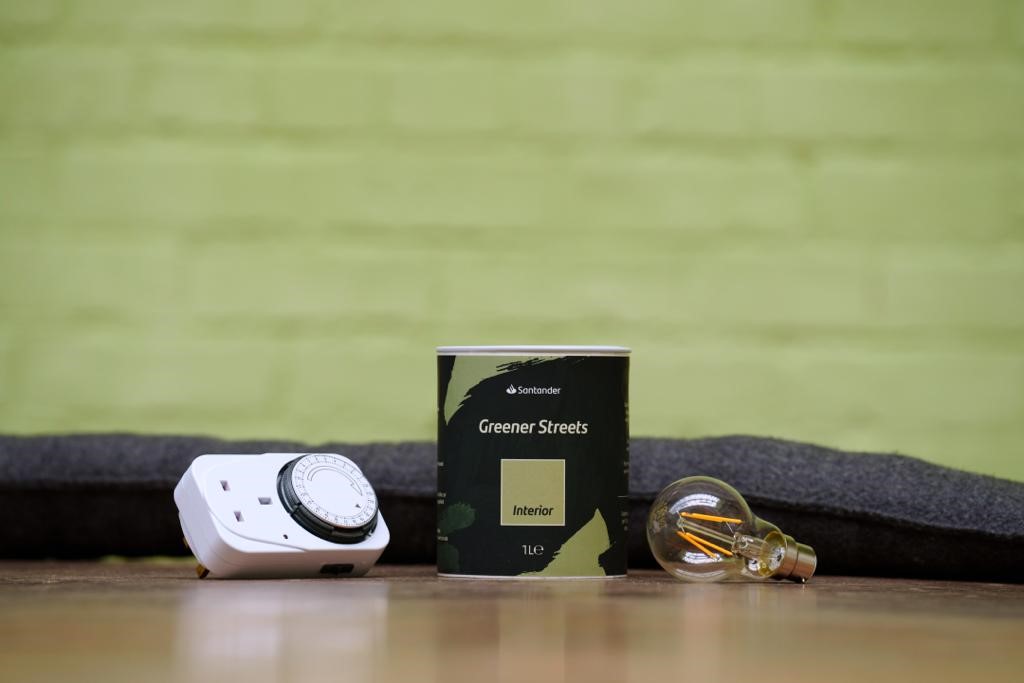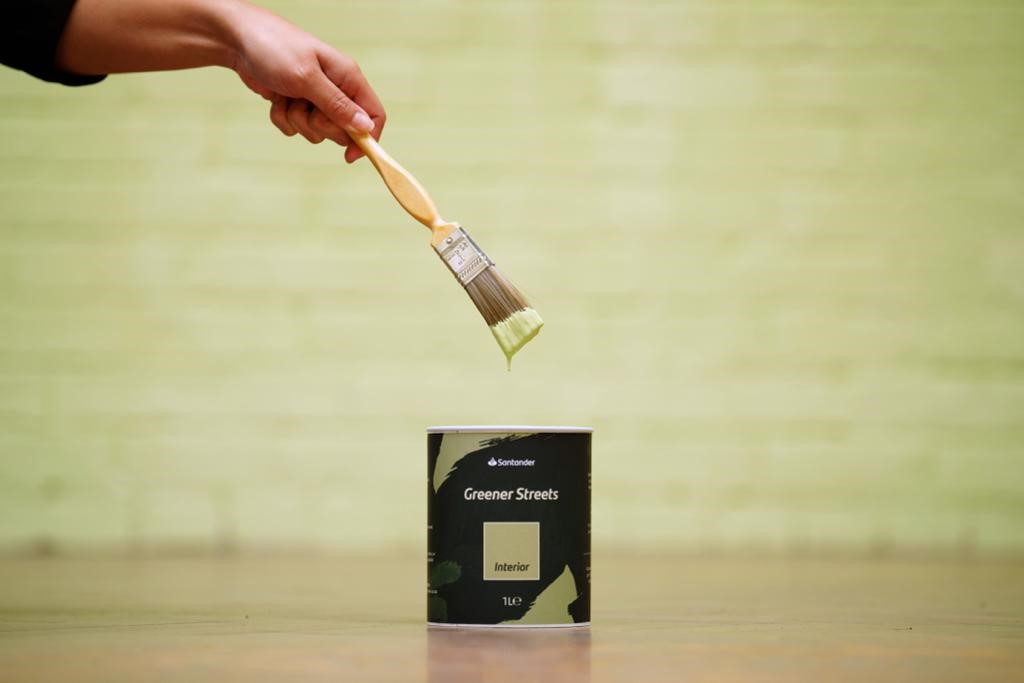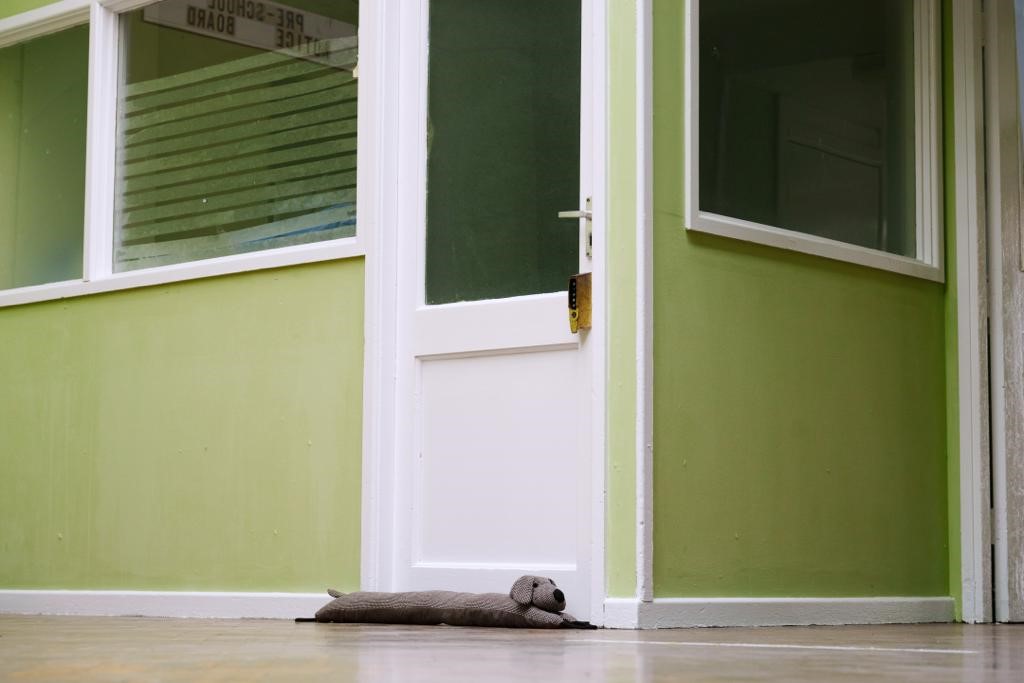- Seven in ten Brits admit to being overwhelmed by retrofitting1
- Misunderstandings around the upfront costs of making eco-upgrades prevent 61% of homeowners from exploring them further
- Santander UK, in collaboration with TV personality, Craig Phillips, highlights how small changes can make a difference to a property’s environmental impact
- Santander’s “Greener Streets” paint, developed in partnership with Graphenstone UK, showcases some of the easy eco-improvements every homeowner can make
New research from Santander UK has found that, despite 70% of homeowning Brits being more concerned than ever about the impact they have on the environment, the same proportion find it too overwhelming to know where to start when it comes to making eco-upgrades to their homes.
The bank’s research found that homeowner action is being blocked by confusion around what retrofitting actually is, with almost a third (32%) admitting they’ve never heard the term. Common misunderstandings around the upfront costs of making eco-improvements are also cited as barriers for nearly two thirds (61%) of homeowners, with nearly one in five (17%) believing they need to spend £20,000 to make a difference to their property.
With nearly two thirds (63%) of homeowners wishing that everyone in their neighbourhood would make one or two eco-improvements to make their area a greener place, Santander has partnered with DIY expert and TV personality, Craig Phillips to show homeowners how small, simple steps can kick-start a retrofitting journey.
DIY expert, Craig Phillips said: “We know that Brits want to make eco-improvements to their homes, but just don’t know where to start.
“The best thing about eco-improvements is that it’s so much easier than you think. Whether it’s switching lightbulbs, popping a draught excluder across the bedroom door, or adding a lick of carbon absorbing paint to the walls - even the small steps can make a difference and help reduce the impact our homes have on the planet.”
Brad Fordham, Head of Mortgages at Santander UK said: “It’s clear that while homeowners understand the need to make changes to their property, the retrofitting conversation and the task at hand has, felt too vast for them to know how they can get involved.
“With an increasing desire from homeowners to understand and act on their property’s energy efficiency, we want to encourage, educate and inspire the nation to consider small eco-improvements as their first step towards, making a difference on the impact their home has on the environment. And save some money in the long run as an added bonus.”
Places within the UK who were most familiar with retrofitting and where residents were most likely to have carried out improvements on their homes include London (40%), Leicester (30%) and Plymouth (25%)2 . However, in many areas homeowners are overwhelmed with the task at hand.
In a bid to show how easy it can be, Santander has taken to the streets in areas where retrofitting awareness is lowest3 to carry-out simple eco-improvements on a range of community buildings. The initiatives include the installation of energy saving lightbulbs, draught excluders, radiator reflectors and redecoration with the bank’s own “greener streets” paint range. The paint has been developed with ecological paint expert, Graphenstone UK4, and absorbs CO2 in the first 30 days after application as it dries and cures, partially offsetting manufacturing and distribution emissions.
First to receive the upgrades were Lark Lane Community Centre in Liverpool, Glasgow Caledonian University’s Student Life area, and student spaces at Swansea University campus.
More broadly, 67% of homeowners said they would be more likely to consider retrofitting if they knew the potential financial and sustainable benefits that come along with it. When asked what other incentives could prompt action three in five (61%) said more government funding, and around a third (34%) would like to see local government support hubs to help homeowners connect with local installers and source the skills they need to retrofit or a national advertising campaign on the topic (32%).
For more information on how Santander can help with eco improvements please visit the Santander UK website.
Craig Phillip’s tips for easy eco-improvements:
1. LED Lighting:
Changing your old Halogen light bulbs to LED is one of the easiest ways to eco-improve your home. LED lights use less energy and have a much longer life span too - a simple bulb swap could lead to a much more manageable energy bill, while helping the planet in the process.
2. Air gaps:
Wherever you feel a slight draught coming into your home, through your letter box, cat flap, windows, doors, loft hatch or gaps in your walls - the nice warm heat that you're paying for is escaping! Not good for your pocket or the environment. Head to your nearest hardware store to pick up some draught excluders or expanding foam and plug gaps around your home.
3. Up-grading your loft insulation:
If your loft insulation hasn’t been upgraded in the last ten years you may find that you could be losing a lot of heat without realising. Investing into just two or three rolls of a new, modern insulation to top up your existing insulation could make a huge difference in the running costs of your heating.
Pro-tip: It’s ok to lay insulation directly over the top of existing material (crossing it the opposite way), making sure you align the edges and don’t squish it down.
4. Sort your radiators:
Bleeding a radiator will help heat your home more effectively as hot water will be able to fill the whole radiator. Air can be easily released from the top of most radiators by using a radiator key or even a flat screwdriver in some cases. Meanwhile, adding reflective sheets behind radiators, can direct heat back into the room rather than allowing it to be absorbed by the wall.
Pro-tip: when bleeding a radiator don’t forget to have a towel to catch any water that flows out once all the air has escaped.
5. Insulating your pipework:
Insulation is advisable not just to stop your pipes bursting in the cold weather, but also to help reduce heat loss or gain, depending on the season. Once insulated, hot water pipes will keep hot water travelling to taps and radiators warmer for longer, so you’ll use less energy to heat the water, reducing your overall energy consumption.
Pro-tip: follow my easy guide to insulating water pipes: Get your home winter ready with Craig Phillips - YouTube
- Ends -
The information contained in our press releases is intended solely for journalists and should not be used by consumers to make financial decisions.
Notes to editors:
1. Research commissioned by Santander, conducted by 3GEM, surveying 2,000 homeowners in the UK aged 18+ between 28th July - 02nd August.
2. Areas where awareness and action towards retrofitting is highest:
1. London (40%)
2. Leicester (30%)
3. Plymouth (25%)
4. Sheffield (22%)
5. Birmingham (20%)
= Manchester (20%)
3. The ten UK cities with lowest awareness of retrofitting:
1. Swansea (48%)
2. Reading (45%)
3. Bristol (41%)
4. Liverpool (40%)
5. Glasgow (39%)
6. Southampton (39%)
7. Brighton (38%)
8. Norwich (37%)
9. Edinburgh (37%)
10. Leeds (37%)
4. For more information on Graphenstone’s paint and Lime technology, please visit: Graphenstone UK
Images
Lark Lane Community Centre updates:


